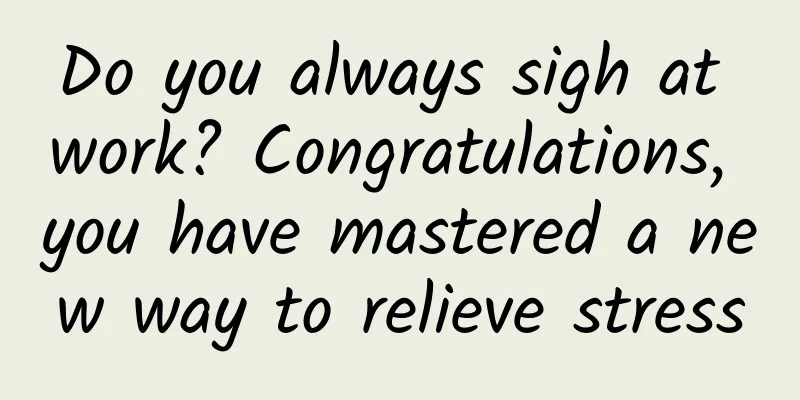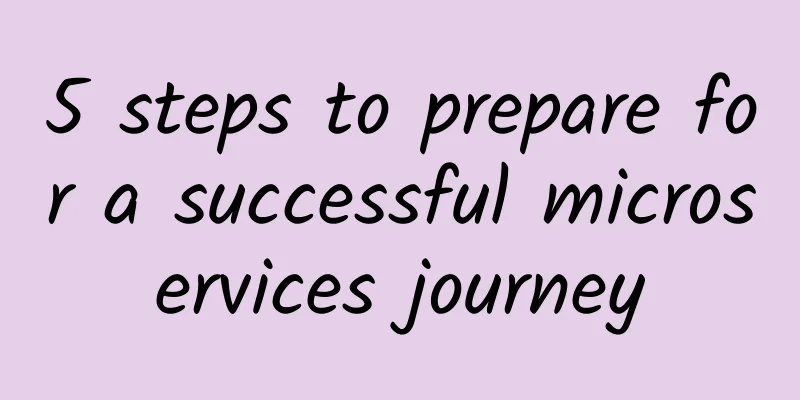Do you always sigh at work? Congratulations, you have mastered a new way to relieve stress

|
"well!!!" I don't know since when, sighing has become a daily routine for modern office workers: On Monday morning, you have to sigh first to have the energy to start a week's work; when faced with heavy work, you have to sigh first to have the courage to open a document... Although there is an old saying that "one sigh will make you poor for three years", and people around us always advise, "Don't sigh all the time, it's too negative." This makes us always have some psychological burden when we sigh - but don't panic! In order to sigh freely, we recently studied the latest research of scientists and found that sighing is not a bad thing! On the contrary, sighing from time to time is good for your physical and mental health. Sighing frequently is probably a sign of depression? Scientists say: It doesn’t exist! As a common non-verbal behavior in daily life, sighing is often considered a manifestation of negative emotions. A small-scale study in 2011 found that daily sighing is associated with subclinical depression. However, some people do not think so. A study with a larger sample size in 2022 found that people who sighed more did not have more depressive symptoms than those who sighed less. In fact, the study found that some men who sighed more had lower depressive symptoms. Copyright images in the gallery. Reprinting and using them may lead to copyright disputes. Isn’t sighing a bad thing? Why does it sound like sighing can actually help reduce negative emotions? This is because of the nature of sighing. At this moment, let us take an active sigh together: first take a deep breath, feel the air flow smoothly from the nasal cavity to the chest cavity and even the abdominal cavity, and then use your mouth to comfortably and freely exhale the waste air in the lungs. Wait, isn't this just a deep breath? In fact, every sigh is composed of a deep inhalation and a slow and long exhalation, and in this process our brain, lungs and nerves are quietly activated. From a physiological perspective, sighing is just like normal breathing and panting. It is just a breathing pattern that we need to deal with specific situations. Moreover, it is not just us humans who sigh, all mammals do. Owners who have carefully observed their furry children sleeping may have noticed that when they are holding their breath in their sleep, they will suddenly sigh for a long time. This is not because they are dissatisfied with the family, but simply because their bodies find that the air intake for normal breathing is not enough, so they sigh to make up for it! This is exactly what the human body does. Therefore, some researchers call sighing a "resetter for the respiratory system." The most basic function of sighing is to maintain our normal breathing pattern and balance the oxygen and carbon dioxide content in our body in an alternating manner of deep and shallow breathing. Compared to our normal breathing, sighing is deeper and heavier. One sigh can almost double the air intake of normal breathing. This not only fills the lungs with air so that we can get more fresh air, but also allows the alveoli in the lungs that are not normally used to be more fully activated, which helps prevent alveolar collapse and is of great benefit to the health of our lungs. Sigh more often, your lungs will really thank you! Copyright images in the gallery. Reprinting and using them may lead to copyright disputes. Because normal breathing, sighing, and panting all share a common set of action pathways, some scientists have even proposed an interesting hypothesis: Initially, humans only had one breathing pattern, which was shallow breathing, but too shallow breathing would cause some alveoli in the lungs to collapse, leading to the death of some people; over time, humans gradually developed a deeper breathing pattern, sighing, which successfully solved the problem of alveolar collapse. Over time, this alternating breathing pattern of normal breathing and sighing became a spontaneous physiological behavior of humans. Regardless of whether we attach any emotional interpretation to sighing, it happens naturally again and again. Each of us, unconsciously, refreshes our breathing state through sighing again and again. What is the relationship between sighs and emotions? Since sighing is a natural physiological behavior of the human body, why do we associate it with emotional changes? This is related to the scene where sighing often occurs - you guessed it, when we are in a "stress" state such as tension, anxiety, fatigue, etc. When we are in these states, our bodies will unconsciously be in a state of stress and tension. Not only will the muscles of the whole body be tense, but in some extreme cases, we will even unconsciously hold our breath for a long time or breathe shallowly, which will put our bodies in a state of hypoxia. At this time, the body, feeling uneasy, will send a signal back to the brain, and the brain will instruct us to take a deep and strong breath, allowing fresh air to flow through the airways all the way to the lungs, delivering fresh oxygen to the blood throughout the body and expelling excess carbon dioxide from the body. With the influx of fresh oxygen and the elimination of carbon dioxide, the originally over-excited sympathetic nerves slowly relax, and the brain, which was confused due to holding the breath, gradually returns to normal. At this time, our stress state is also relieved. Sighing is indeed caused by emotions such as anxiety, tension, and stress, but rather than saying that sighing is a bad signal, it is better to say that our body is actively saving itself. As mentioned above, proper sighing can help reduce negative emotions. When we move from a bad state to a more comfortable state, sighing can also help us complete the emotional climb better. A long sigh can help us move from a depressed state to a happy state more quickly. At this time, if we add a long stretch, the effect will be super doubled. In addition to emotional changes, further research by scientists has also found that sighing can also help improve our cognitive abilities. Many people will sigh and cheer themselves up before starting a difficult task. Don’t think that this is just a spiritual victory. Scientists have confirmed in research that this behavior does help improve our cognitive ability in the task, thereby improving our performance in the task. Interestingly, only breathing in through the nose seemed to have an effect, while breathing through the mouth had no similar effect, perhaps because the two breathing patterns activate different brain areas. In short, every sigh can not only change our breathing state, but also refresh our physical state from the inside out, allowing our body and mind to be updated with red and blue. Moreover, sighing not only helps you feel more comfortable on a physiological level, but in social situations, sighing occasionally can also be helpful. Copyright images in the gallery. Reprinting and using them may lead to copyright disputes. Sometimes, this kind of deep sigh is like a way to vent our emotions, allowing us to get rid of the turbid air in our chest and the resentment in our hearts. Of course, sighing is good, but don't take it as a solution to your life. After all, when you get used to this breathing pattern, your normal breathing may be affected. But if you really like the pleasure brought by sighing, you might as well try some sighing breathing exercises, so that every sigh becomes a breathing exercise. In this way, when others ask you why you always sigh, you can confidently say: You are not sighing, I am doing advanced breathing exercises! Finally, I hope everyone can breathe a sigh of relief freely and comfortably – awesome! ! ! ! Tips: How to convert sighing into breathing training? Key points: 1. Sit up straight, keep a neutral position, and relax your shoulders; 2. Breathe in quickly and exhale slowly, in through the nose and out through the mouth. 3. When inhaling, try to let the air fill the entire chest and abdominal cavity to push the diaphragm to move, rather than just the chest rising and falling. 4. When you exhale, try to retract your ribs. 5. Repeat the process over and over again, and each practice only lasts five minutes. Planning and production Author: Hydra popular science author Reviewer: Fan Chunlei, Associate Researcher, Institute of Psychology, Chinese Academy of Sciences Planning丨Yinuo Editor: Yinuo Proofread by Xu Lai and Lin Lin |
<<: "N kinds" of solutions for "Dinghaishenzhen" as a measurement tool
>>: Pollen is silent, but it just makes you cry - see here for how to deal with it!
Recommend
Android imitates the layout architecture of the product details page of JD.com and Tmall app, as well as its functional implementation
Preface In e-commerce apps, the focus is on produ...
How to mine long-tail keywords for a website? The secret to doubling your website traffic!
People who are now engaged in search marketing ar...
The new interface of iOS 19 is exposed, it’s amazing!
As we enter 2025, the update cycle of iOS 18 is a...
Foreign language learning: Learn Spanish from scratch: 0-A1 introductory course
Foreign language learning: Learn Spanish from scr...
Why is there still dust in my house even though I clean it every day? Where does it come from?
This article was reviewed by Dr. Tao Ning, Associ...
Operational review: attracting new users and monetizing in online education!
The author of this article starts from his own wo...
Become a powerful and outstanding full-stack designer!
When people talk about full-stack designers, it s...
How to evaluate Zhihu information flow advertising! (Attached with delivery data and materials)
As a practitioner in Internet advertising , some ...
Defeating the human champion! What does AI's success in drone racing mean?
For the first time, a drone successfully defeated...
3 ways to relieve side stitches and easily get rid of the pain when breathing
Source: Youlai Healthy Life...
3 steps to effectively improve the user retention rate of your product!
After entering the stock market, user value becom...
Every smooth day, they are protecting you
Mixed Knowledge Specially designed to cure confus...
Testing the audit loophole of BOSS Zhipin: Fake recruitments are over in 3 minutes and resumes are pouring in
From Wei Zexi to job seeker Li Wenxing, the produ...
How can Weibo advertising take advantage of the epidemic to revive?
“If you were given a room with a suitable tempera...
If you don't do these three things, your refrigerator will contain at least four more pathogens! The correct approach is...
A cold and airtight refrigerator is the best plac...









